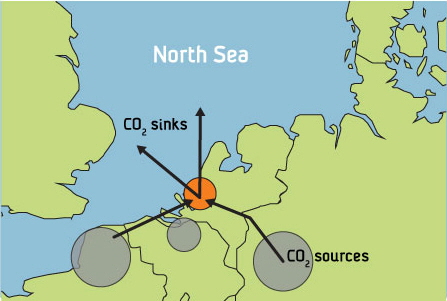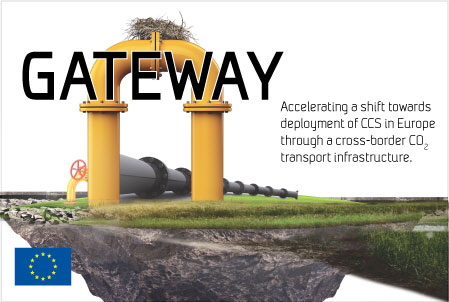September 9, 2016 – In a meeting in Brussels next week, those looking at carbon capture and sequestration (CCS) plan to meet to arrange for a pilot community test centered on Rotterdam as the hub connecting industrial emitters with a common storage sink.
Although CCS has been seen as a costly way to deal with carbon emissions its deployment represents an important technology to help mitigate atmospheric warming by removing CO2 and transporting it underground.
The idea is to gather CO2 from multiple producing sites and using a distribution infrastructure gather and store the gas underground in a common repository.
In Rotterdam alone there is a growing CCS network handling a number of sites. including a coal-fired power plant, a refinery, emissions from harbor infrastructure and other sites. To this would be added industries from the Ruhr, Moerdijk, and Antwerp industrial complexes. The carbon sinks to be used are located offshore under the seabed.
CCS to date has been a very expensive solution for reducing carbon in the atmosphere because every implementation has been one off. That’s why creating a CCS hub or cluster to spread the cost across multiple industrial sources makes it far more economical to implement. Creating a CCS hub allows smaller emitters to participate making the technology far more effective in helping to reduce atmospheric carbon. And a CCS hub takes advantage of the close proximity of industrial emitters often found in geographic concentration around ports, manufacturing, refining and mining centres.
GATEWAY hopes to be up and running by 2020. Once implemented it should be a model for other industry hubs. In Rotterdam itself larger scale deployment is on the drawing boards by 2025 with plans to grow the hub to include industrial sources in Eenshoven, Amsterdam, Zeeland, and Limburg in The Netherlands, LeHavre in France, and Yorkshire and Humber in the United Kingdom.
Postscript:
Canada’s CCS projects, two currently operational, one in Saskatchewan (SaskPower’s Boundary Dam) and the other in Northern Alberta (Royal Dutch Shell’s Quest) should begin to reduce the country’s carbon emissions by a significant factor. Canada’s target goal to lower carbon emissions by 30% below 2005 levels no later than 2030 represents 200 million tons of CO2 and methane (CH4) annually. the combined capacity of the current CCS projects plus two more (the Great Plains Synfuel Plant and Weyburn-Midale Project, and the Alberta Carbon Trunk Line with Agrium CO2 Stream) in development will reduce emissions annually by 6.4 million tons which represents about 3% of the 2030 target.


















